Letters from Lodi
An insightful and objective look at viticulture and winemaking from the Lodi
Appellation and the growers and vintners behind these crafts. Told from the
perspective of multi-award winning wine journalist, Randy Caparoso.
Finding ideal wines for foods is as easy as putting together ingredients in a dish

A no-brainer of a food and wine match: Spicy, meaty, smoky, savory baby back ribs (in this photo, cooked by Lodi winemaker Mike McCay) with spicy, meaty, smoky, savory Petite Sirah (poured by Lodi winemaker Gerardo Espinosa of Anaya Vineyards).
Picking the perfect wine for a dish, or preparing a perfect dish for a pre-chosen wine, is a lot less mysterious than you may think. In fact, it's as easy as pie.
Make that, easy as an ice cream sundae. Everyone knows, for instance, that vanilla ice cream and hot chocolate syrup go great together because both the ice cream and syrup are sweet yet vanilla and chocolate are contrasting flavors that complement each other. There can also be a complementary contrast of temperature (when hot fudge goes on cold ice cream). For textural contrast, you might add walnuts (soft/crunchy/sweet/nutty) and whipped cream (creamy/airy); and for even more different flavors, bananas and a cherry.
Call that dessert nirvana. It is also a basic example of how we cook⏤putting ingredients together that just make sense⏤as well as how wines and foods are ideally matched.
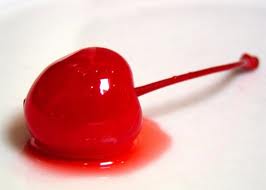
There is nothing more perfect than a maraschino on top of the whipped cream on an ice cream sundae because it adds a burst of contrasting flavor with a sweetness that compliments all the other components in the dessert.
It's all about common sense. Like the fact when you have a piece of white fish, it makes sense to squeeze the juice of lemon on the fish to bring out the flavor. When it comes to wine, it's a simple matter of choosing a dry white wine with a lemony tartness to enhance the fish in the same way as a squeeze of lemon.
Or the fact that a full-bodied, big tannin, richly oak-influenced red wine such as a Cabernet Sauvignon or Malbec almost always goes well with full, fatty red meats such as beef and lamb, especially when it's charred by a grill. You don't need a Master Sommelier to help you figure that out.
We know certain wines and foods go well together in the same way that ketchup tastes great on hamburgers, mustard on hot dogs, hot fudge on vanilla ice cream, and popcorn with salt and butter. What you may not be conscious of is the why. Why does lemon taste great on fish, or ketchup on hamburgers?
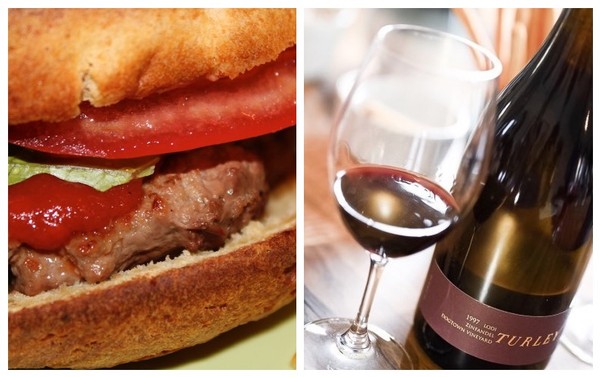
No one has to think about why ketchup tastes great on a hamburger: Because it adds a savory, zesty taste, the same way that a zesty, acid-driven Lodi-grown Zinfandel adds even more of a savory taste to a hamburger.
The simplest way we can explain it is this: It is how all ingredients in dishes⏤and wines when they are drunk with foods⏤are successfully combined, which is in basically two different ways:
1. Similarities
2. Contrasts
In terms of similarities, it's when we combine ingredients of like quality (the sweetness of ice cream enjoyed with the sweetness of chocolate or any fruit). With respect to contrasts, it's about choosing contrasting qualities that have universal appeal (vanilla and chocolate, salt and caramel, oil and vinegar, ketchup and mustard, etc.).
By the same token, wines are best matched with foods by applying principles of similarities and contrasts. It helps, of course, to know the basic taste profiles of wines, which many of us do. White Zinfandel, for example, is usually medium-sweet, as are bottlings of Moscato. Chardonnays are usually dry yet soft, smooth, and full-bodied; whereas Sauvignon Blancs, Pinot Grigios, and Albariños are lighter but a little more tart in acidity than Chardonnays.
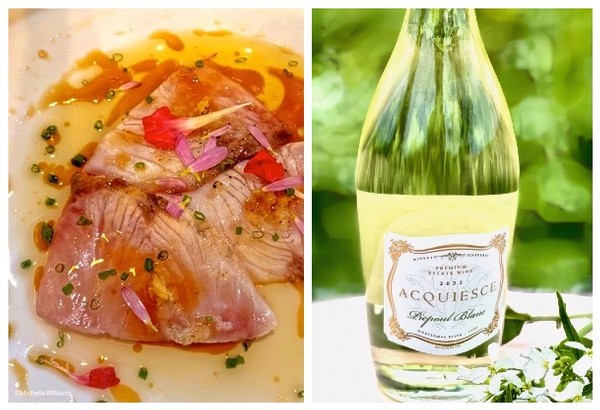
One of the easiest, and most delicious, matches you can ever do is a fish in a tart vinaigrette—such as the amberjack kampachi served in chili-flecked ponzu in this photo—with a dry white wine that has a lemony crisp edge such as the growing number of Picpoul Blancs coming out of Lodi today.
Zinfandels and Pinot Noirs are usually fragrant, often a little spicy and round in texture; whereas Cabernet Sauvignons and Malbecs tend to be darker, fuller-bodied, edgier, and dryer in tannin qualities.
If you're something of a novice, you may be just beginning to learn these differences. But if you've been enjoying wine for a few years, chances are you already know the basics; and once you do, wine and food matching is fairly simple.
We know, for instance, that a plate of raw oysters, like a piece of fish, is easily enhanced by the contrasting taste of lemon. Therefore it makes sense that a plate of oysters is immensely improved by the contrasting taste of white wines with lemony crisp acidity. Two universal choices are Sauvignon Blanc and champagne-style sparkling wines. In Lodi, there are numerous choices of other acid-driven whites such as Albariño, Picpoul Blanc (made from the Piquepoul grape), and Vermentino⏤all varietals made from grapes that thrive in Lodi's warm Mediterranean climate.
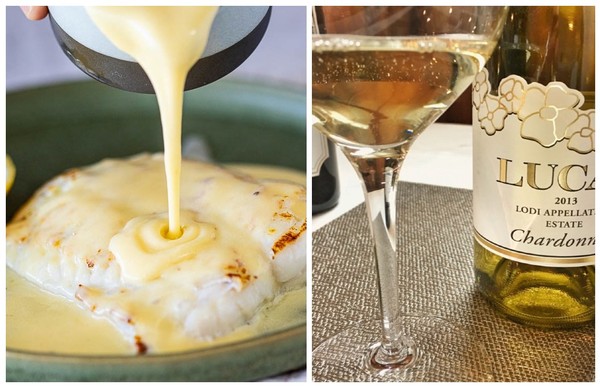
When white fish is prepared with a lemon-infused butter sauce, as it often is, it makes a seamless match with Chardonnays that are balanced by both fresh acidity and the creaminess of barrel aging (such as Lodi's Lucas Chardonnay, which is partially barrel fermented).
Very often, though, we also enjoy white fish dishes in more complex preparations⏤served, for instance, in buttery, French-style beurre blanc sauces, or in a sauce finished with a touch of creaminess. Lemony dry white wines are great with this; but even better might be a Chardonnay, which are typically aged and even fermented in white oak barrels, which add creamy, sometimes even buttery, textures to the wine. In this case, both contrasting and similar sensations make the match, the same way chocolate syrup goes on vanilla ice cream.
Besides palate sensations, aromas, and flavors can play an important part in wine and food interactions. For example, a neat trick of the trade is to remember that red wines that have intrinsic peppery spice qualities⏤such as Syrah, Petite Sirah, and to some extent, Zinfandel and Grenache⏤do particularly well with red meats spiced by pungent doses of black pepper or even chile peppers, either drizzled on top or infused in a sauce or marinade. Pepper in a wine, pepper in a dish⏤similar flavors that, when put together, work well pretty much all the time.

The "hot" smell and taste of peppercorns is so ingrained in most memories because of their common usage in food, it easily connects as a compatible sensory quality when experienced in the context of peppery wines such as Zinfandel, Grenache, Syrah, and Petite Sirah.
In similar fashion, quite often a chef finishes a seafood or white meat dish (i.e., chicken or pork) with aggressive use of herbs, such as in tarragon butter or cooking with generous doses of rosemary, dill, or even bell peppers. In this case, it only makes sense to lean towards white wines such as Sauvignon Blanc which also have green herby qualities in the aroma and flavor.
There are numerous tried-and-true matches that we have come to know and love. A run-down on some basic examples, based on the commonsense principles of similarity and contrast:
• Full-bodied, dry, richly flavorful, meaty textured white wines (such as Chardonnay, Viognier, or Roussanne) with meatier “other white” meats (pork, veal, chicken), especially in richly flavorful sauces.
• White wines with zesty acidity (i.e., Sauvignon blanc, Picpoul Blanc, Albariño, Vermentino, Grüner Veltliner, Assyrtiko, dry style Riesling or Chenin Blanc, et al.) with foods with matching degrees of acidity (such as salads in mildly sharp vinaigrettes, or cheeses like chèvre).
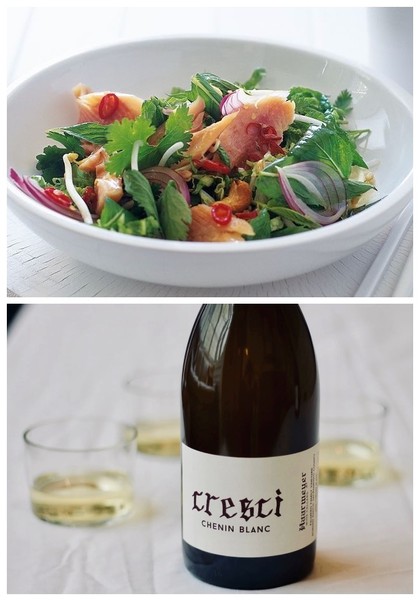
Here is a combination that makes all the sense in the world: Smoked trout salad with slivers of chile pepper and a tart/sweet sake vinaigrette with a honeyed yet bone dry, tart-edged Lodi-grown Chenin Blanc crafted by Haarmeyer Wine Cellars.
• Slightly sweet yet zesty white wines (such as Riesling, some Chenin Blancs, and Gewürztraminers) with seafood prepared with slightly sweet, sour, salty, and even spicy-hot sauces and ingredients (since sugar in wine and as a food ingredient brings contrasting balance to spicy, salty or acidic sensations).
• Soft red wines (such as Pinot Noir, Grenache, Cinsault, Carignan, Gamay) with soft yet fleshy, full-flavored red fish (salmon, tuna, etc.).
• Zesty acid-driven red wines with moderate tannin and sometimes earthy/foresty notes (Zinfandel, Carignan, Barbera, Sangiovese, Montepulciano, Nero d'Avola) with zesty, Italian-influenced dishes (use of pasta, tomato, balsamic vinegar, olive oil, garlic, and resiny herbs like oregano and rosemary).
• High tannin reds with slight bitterness or astringency (Cabernet Sauvignon, Petite Sirah, Tannat, Teroldego, Dornfelder) with red meats prepared with slightly bitter peppercorns, vegetables, or char from wood grilling.
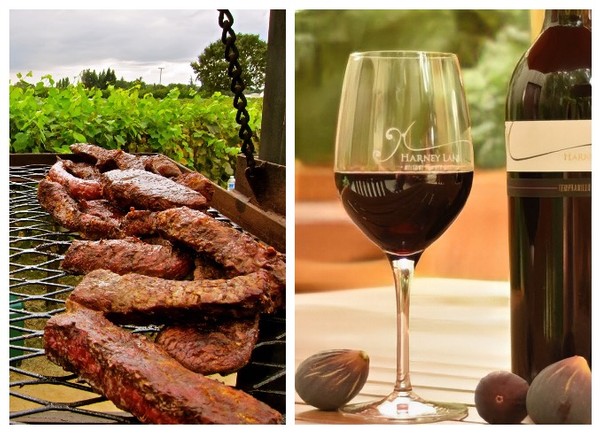
When you open fire-grill short ribs, almost nothing is better than a slightly smoky, meaty, firm yet well-rounded Tempranillo such as those of Lodi's Harney Lane (in the photo), m2, McCay, Heritage Oak, Bokisch, Peirano, and a host of other specialists of the grape.
• Bright, zesty, sweetly fruit-scented red wines (Zinfandel, Syrah, Zweigelt, Blaufränkisch) with fatty meats in zesty, sweet, or even spicy sauces, salsas or marinades (re-barbecued or even teriyaki style beef or pork ribs).
• Big, herbaceous, minty, or cedary Cabernet Sauvignon-based reds with red meats in sauces reduced with aromatic green herbs (mint, thyme, sage, etc.).
• Smoky, toasty, aggressively oaked wines (most Chardonnays and ultra-premium New World reds) with white or red meats that are aggressively grilled, roasted, or wood-smoked.
• Sweet, high acid, intensely fruity “late harvest” whites with sweet desserts made with fruits retaining natural fruit acidity (berries and stone fruits, peach and pear).
• Sweet dessert wines (late harvest whites, Port, etc.) contrasting with salty blue cheeses (like Roquefort, gorgonzola, and Maytag Blue).
• Sweet, full-bodied fortified reds (Port, late harvest Zinfandel) with bitter/sweet chocolate desserts.
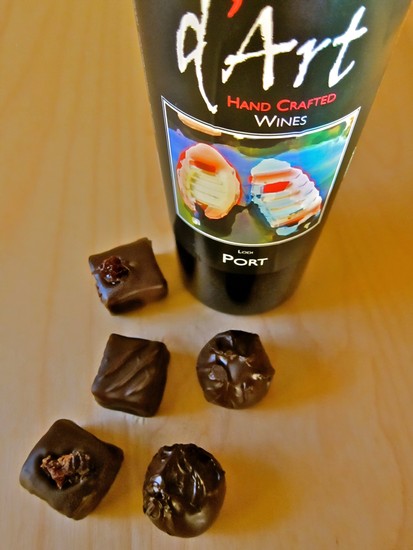
Match made in heaven: Sweet Port style reds (such as Lodi specialist d'Art Wines) with bitter/sweet chocolates.